
Luxury fashion conglomerate Tapestry (NYSE: TPR) reported Q1 CY2025 results exceeding the market’s revenue expectations, with sales up 6.9% year on year to $1.58 billion. The company’s full-year revenue guidance of $6.95 billion at the midpoint came in 1.1% above analysts’ estimates. Its GAAP profit of $0.95 per share was 7.4% above analysts’ consensus estimates.
Is now the time to buy Tapestry? Find out by accessing our full research report, it’s free.
Tapestry (TPR) Q1 CY2025 Highlights:
- Revenue: $1.58 billion vs analyst estimates of $1.53 billion (6.9% year-on-year growth, 3.7% beat)
- EPS (GAAP): $0.95 vs analyst estimates of $0.88 (7.4% beat)
- Adjusted EBITDA: $355.3 million vs analyst estimates of $291.9 million (22.4% margin, 21.7% beat)
- The company lifted its revenue guidance for the full year to $6.95 billion at the midpoint from $6.85 billion, a 1.5% increase
- EPS (GAAP) guidance for the full year is $4.88 at the midpoint, beating analyst estimates by 19.8%
- Operating Margin: 16%, up from 13.8% in the same quarter last year
- Free Cash Flow Margin: 43.1%, up from 5.3% in the same quarter last year
- Constant Currency Revenue rose 8% year on year (0% in the same quarter last year)
- Market Capitalization: $15.47 billion
“Our strong second quarter outperformance is a testament to our exceptional teams and our collective commitment to disciplined brand building,” said Joanne Crevoiserat, Chief Executive Officer of Tapestry,
Company Overview
Originally founded as Coach, Tapestry (NYSE: TPR) is an American fashion conglomerate with a portfolio of luxury brands offering high-quality accessories and fashion products.
Sales Growth
A company’s long-term sales performance can indicate its overall quality. Any business can put up a good quarter or two, but the best consistently grow over the long haul. Unfortunately, Tapestry’s 3.6% annualized revenue growth over the last five years was sluggish. This was below our standard for the consumer discretionary sector and is a poor baseline for our analysis.
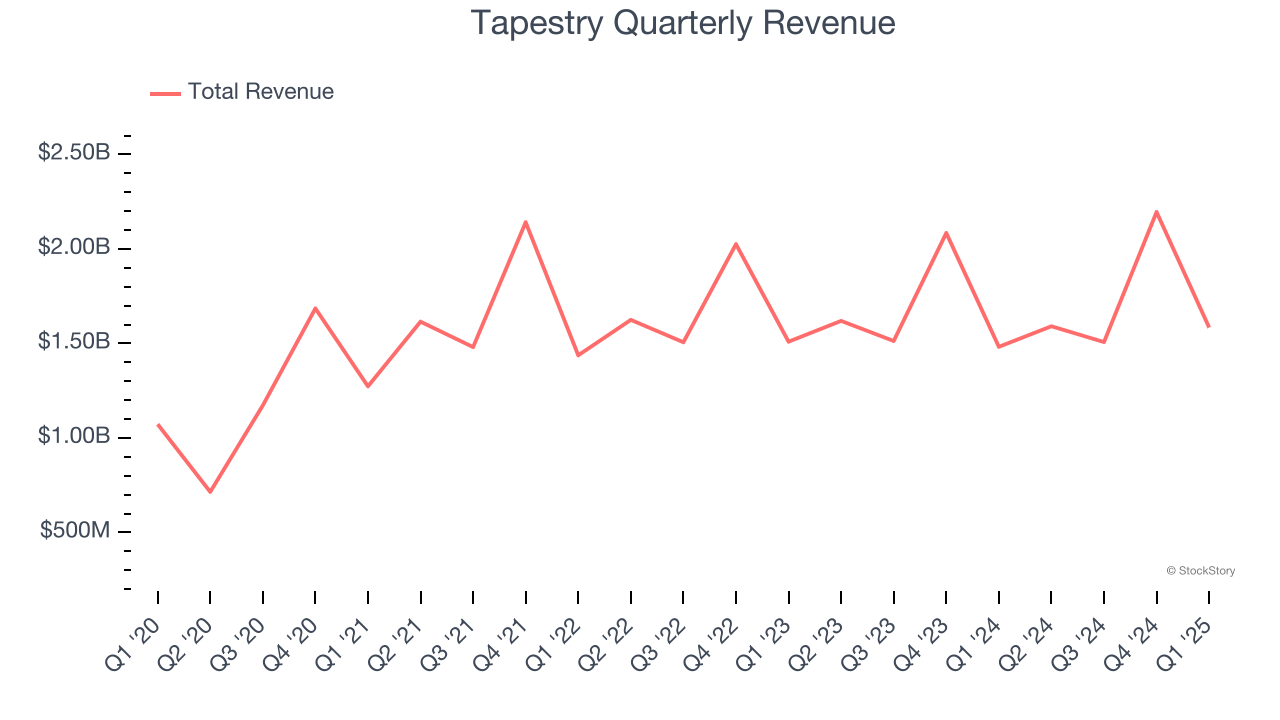
Long-term growth is the most important, but within consumer discretionary, product cycles are short and revenue can be hit-driven due to rapidly changing trends and consumer preferences. Tapestry’s recent performance shows its demand has slowed as its annualized revenue growth of 1.6% over the last two years was below its five-year trend. 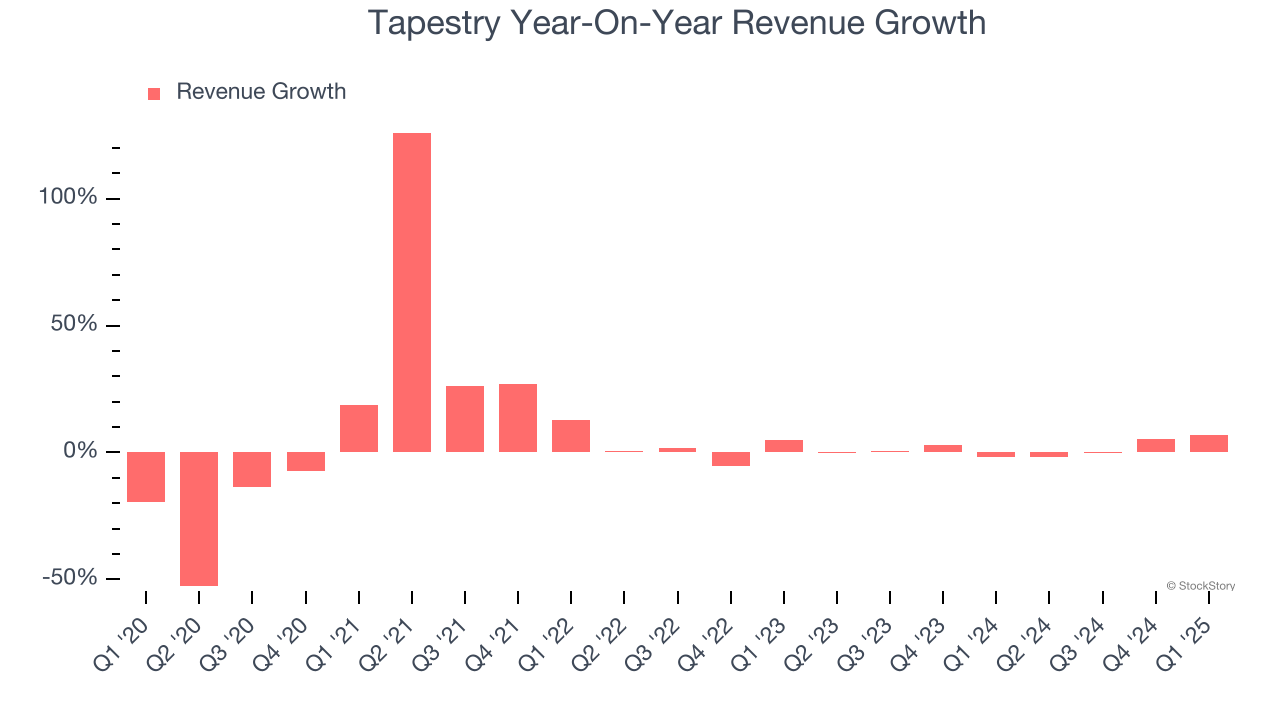
We can better understand the company’s sales dynamics by analyzing its constant currency revenue, which excludes currency movements that are outside their control and not indicative of demand. Over the last two years, its constant currency sales averaged 2.4% year-on-year growth. Because this number aligns with its normal revenue growth, we can see that Tapestry has properly hedged its foreign currency exposure. 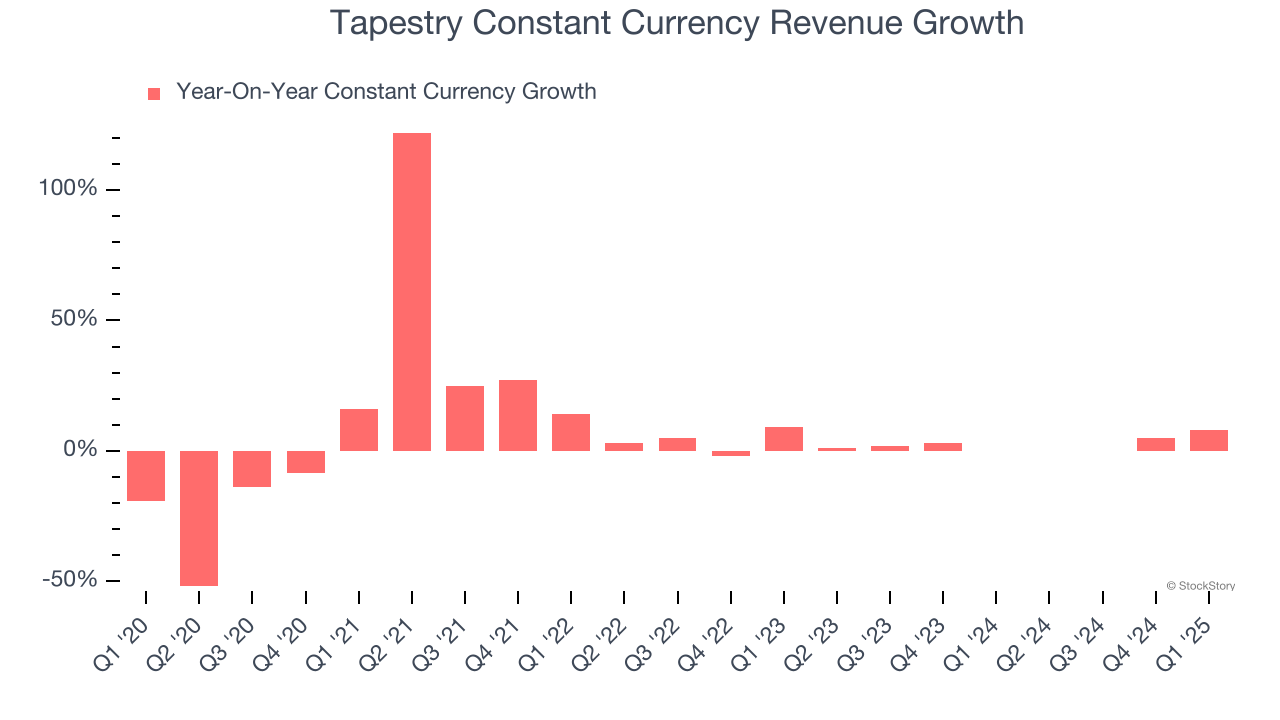
This quarter, Tapestry reported year-on-year revenue growth of 6.9%, and its $1.58 billion of revenue exceeded Wall Street’s estimates by 3.7%.
Looking ahead, sell-side analysts expect revenue to grow 1.9% over the next 12 months, similar to its two-year rate. This projection doesn't excite us and implies its newer products and services will not accelerate its top-line performance yet.
Today’s young investors won’t have read the timeless lessons in Gorilla Game: Picking Winners In High Technology because it was written more than 20 years ago when Microsoft and Apple were first establishing their supremacy. But if we apply the same principles, then enterprise software stocks leveraging their own generative AI capabilities may well be the Gorillas of the future. So, in that spirit, we are excited to present our Special Free Report on a profitable, fast-growing enterprise software stock that is already riding the automation wave and looking to catch the generative AI next.
Operating Margin
Operating margin is an important measure of profitability as it shows the portion of revenue left after accounting for all core expenses – everything from the cost of goods sold to advertising and wages. It’s also useful for comparing profitability across companies with different levels of debt and tax rates because it excludes interest and taxes.
Tapestry’s operating margin might fluctuated slightly over the last 12 months but has remained more or less the same, averaging 17.8% over the last two years. This profitability was top-notch for a consumer discretionary business, showing it’s an well-run company with an efficient cost structure.
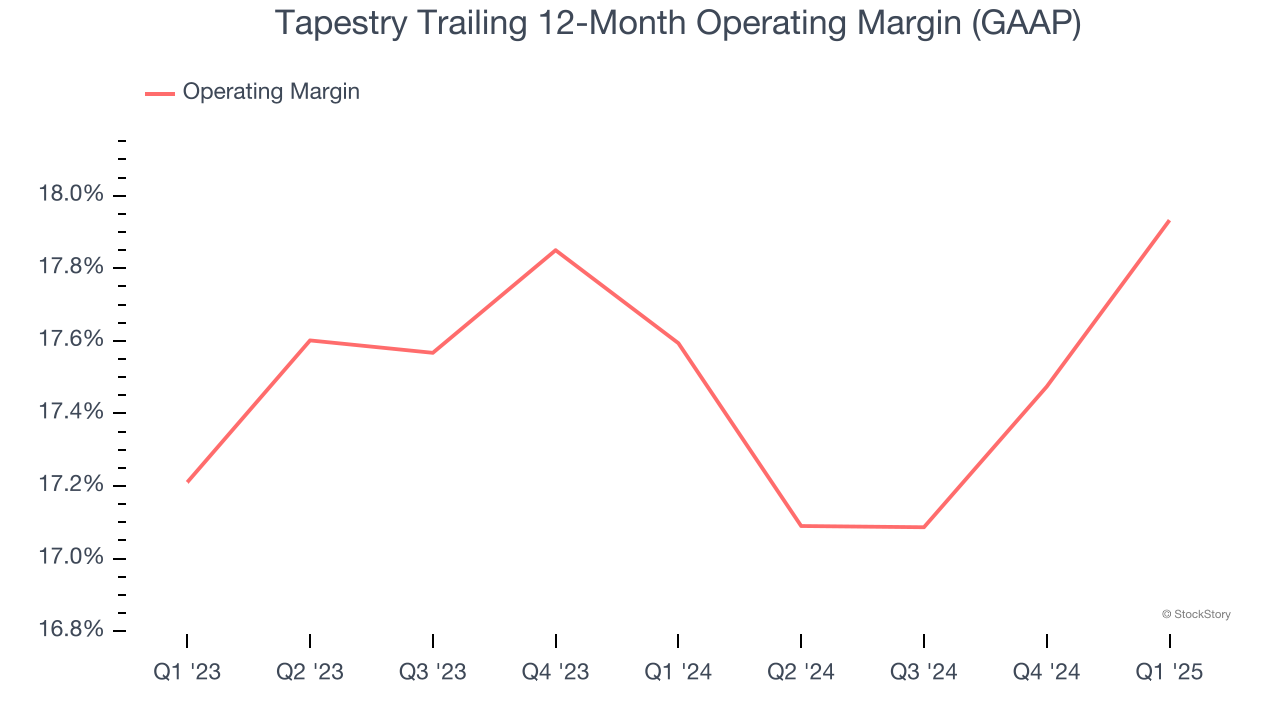
This quarter, Tapestry generated an operating profit margin of 16%, up 2.2 percentage points year on year. This increase was a welcome development and shows it was more efficient.
Earnings Per Share
We track the long-term change in earnings per share (EPS) for the same reason as long-term revenue growth. Compared to revenue, however, EPS highlights whether a company’s growth is profitable.
Tapestry’s full-year EPS flipped from negative to positive over the last five years. This is encouraging and shows it’s at a critical moment in its life.
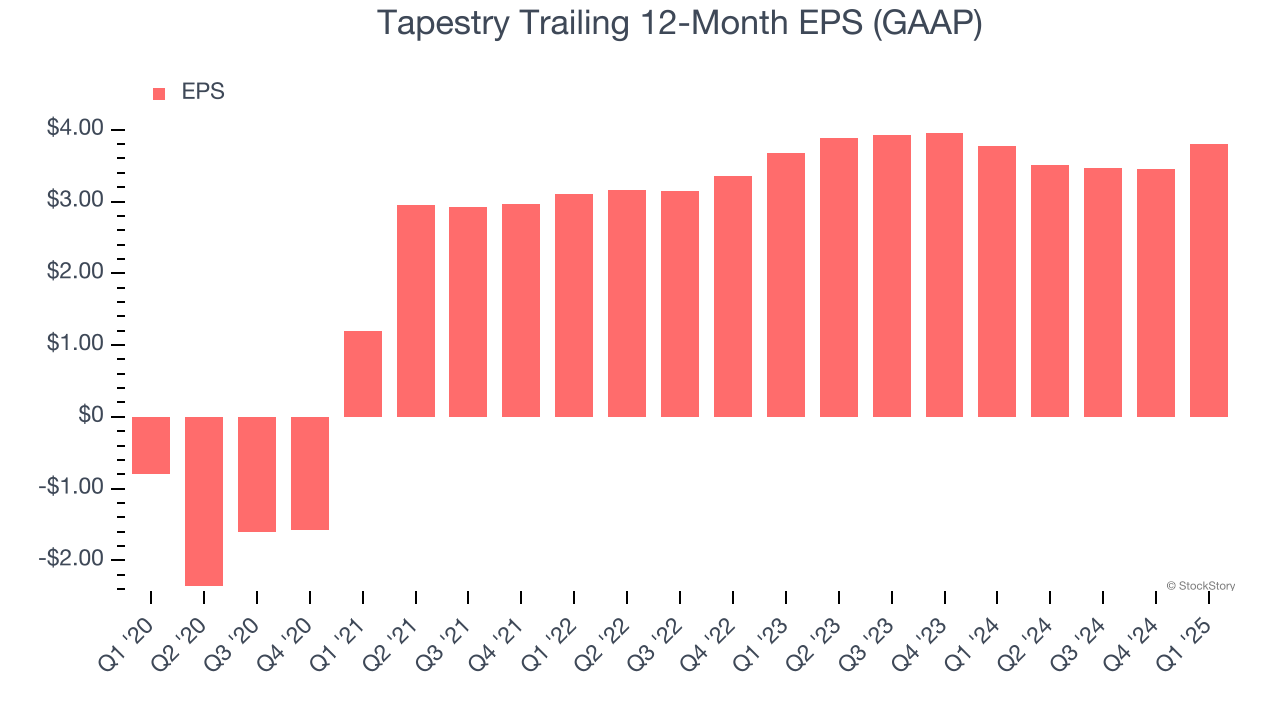
In Q1, Tapestry reported EPS at $0.95, up from $0.60 in the same quarter last year. This print beat analysts’ estimates by 7.4%. Over the next 12 months, Wall Street expects Tapestry’s full-year EPS of $3.80 to grow 38.6%.
Key Takeaways from Tapestry’s Q1 Results
We were impressed by how significantly Tapestry blew past analysts’ constant currency revenue, EPS, and EBITDA expectations this quarter. We were also glad it raised its full-year revenue and EPS guidance. Zooming out, we think this quarter featured some important positives. The stock traded up 5.4% to $78.79 immediately following the results.
Indeed, Tapestry had a rock-solid quarterly earnings result, but is this stock a good investment here? The latest quarter does matter, but not nearly as much as longer-term fundamentals and valuation, when deciding if the stock is a buy. We cover that in our actionable full research report which you can read here, it’s free.





